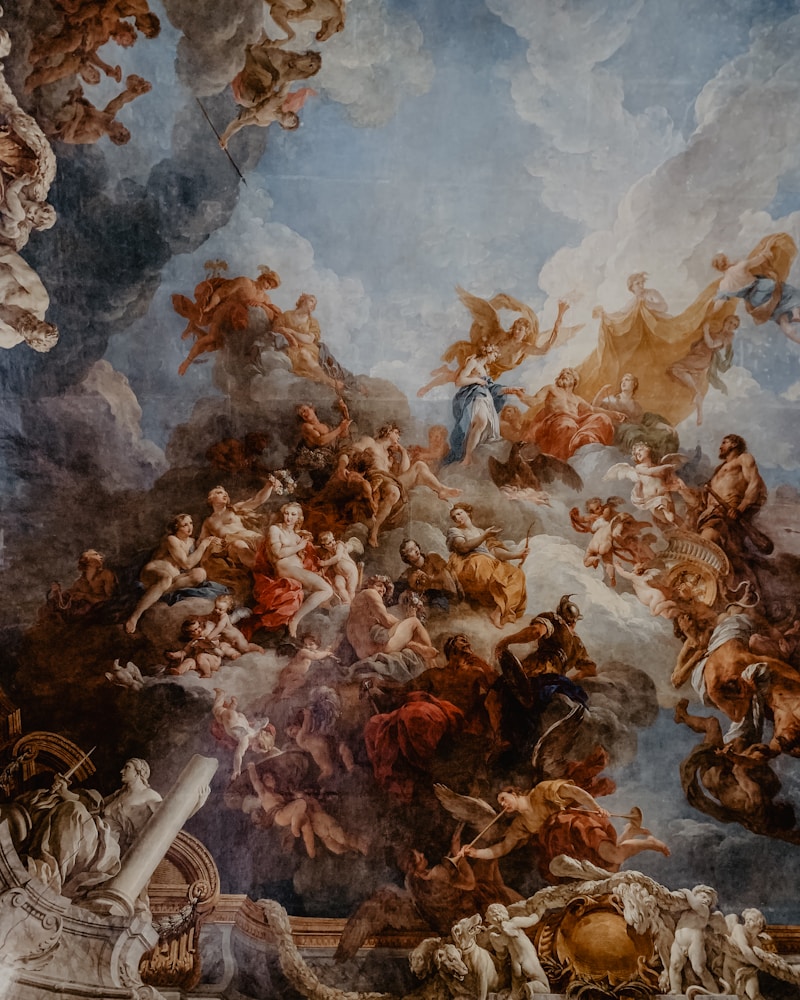The Influence of Art on Wedding Dress Design: A Timeless Connection
Understanding the Artistic Influence on Wedding Dress Design
Weddings are among the most cherished occasions in our lives, where love and creativity come together to celebrate a unique bond. One of the most significant aspects of a wedding is, of course, the bride's dress. Over the years, wedding dress design has evolved, reflecting changing tastes, societal norms, and, notably, the influence of art. This article delves into the profound impact art has on wedding dress design, exploring historical contexts, artistic movements, and future trends.
The Historical Context of Wedding Dress Design
To comprehend how art intersects with wedding dress design, it's essential to trace its roots. In the past, Wedding dresses were often influenced by royal fashion. For instance, Queen Victoria's wedding gown in 1840, made from white silk satin, set a precedent for white Wedding dresses. The influence of art can be seen in how various art movements like Baroque, Rococo, and Art Nouveau have played a role in shaping bridal fashion over the decades.
| Art Movement | Impact on Wedding Dress Design |
| Baroque | Intricate detailing, opulent fabrics, and elaborate silhouettes |
| Rococo | Light colors, delicate floral patterns, and feminine cuts |
| Art Nouveau | Flowing lines, natural forms, and innovative materials |
Artistic Inspirations in Modern wedding dress Design
In the contemporary era, designers draw inspiration from a myriad of sources, including famous artists and their works. For instance, the delicate lace and embroidery reminiscent of the works of Gustav Klimt often guide designers in creating pieces that resonate with vintage charm while maintaining modern appeal. Likewise, the colors and forms found in Impressionist paintings, like those of Claude Monet, inspire whimsical patterns and soft palettes, contributing to a bride's ethereal look.
A Look at Iconic Designers
Designers such as Vera Wang, Marchesa, and Christian Siriano infuse their collections with artistic elements. Vera Wang, for example, is known for incorporating architectural designs and a modern aesthetic that pushes the boundaries of traditional bridal wear. Marchesa often draws inspiration from nature and historic art, leading to gowns that feature intricate floral appliqués and unique cuts. Their artistry showcases how the influence of art allows for individual expression in wedding dress design.

The Role of Color in Wedding Dress Design
Color plays a pivotal role in the visual impact of Wedding dresses and is often influenced by art. Artists like Pablo Picasso and Henri Matisse employed color theory in profound ways that resonate even in wedding fashion. The choice of hues in a wedding gown can evoke specific moods and themes, making the dress a crucial element of the wedding's overall aesthetic. For instance, the vibrant colors typical of abstract expressionism can inspire bold and unconventional Wedding dresses that challenge normative standards.
Fabric and Texture: Artful Choices
The fabric and texture of a wedding dress also reflect artistic influences. Fabrics such as silk, satin, lace, and tulle offer different tactile experiences and can represent various artistic expressions. An innovative designer might choose to mix textures in a single gown, reminiscent of mixed media art. This adds depth and creates a visual dialogue that captivates the onlookers.
Trends and Innovations in Wedding Dress Design
As our understanding of art evolves, so too does wedding dress design. The use of technology in fashion—such as 3D printing and digital fabric printing—is revolutionizing how artists and designers create Wedding dresses. These technologies allow for unprecedented freedom in design, echoing contemporary art's exploration of new materials and methods. Brides today are increasingly seeking personalized gowns that reflect their individuality, often inspired by their favorite art styles or artists.
Culture and Tradition in Wedding Dress Aesthetics
The influence of cultural art traditions is also significant in wedding attire around the globe. In many cultures, the wedding dress combines traditional artistry with modern flair. For instance, the vibrant colors and intricate beadwork of Indian bridal attire reflect a rich cultural heritage, while still being adapted to contemporary tastes. This fusion highlights the importance of preserving cultural artistry while making room for modern interpretations.
Emotional and Personal Connections to Art and Design
Ultimately, the influence of art on wedding dress design lies in its ability to conjure emotions and personal connections. Many brides seek dresses that tell their stories or reflect their journeys, intertwining artistic elements from their favorite artists or artistic movements that resonate personally. The creative process of designing or choosing a wedding dress is akin to creating a piece of art—a manifestation of love, hope, and dreams.
Conclusion: The Lasting Impact of Art on Wedding Dress Design
The influence of art on wedding dress design is an everlasting relationship, rich with history and filled with innovation. From the historical inspirations drawn from royal gowns to the contemporary innovations introduced by designers, the artistic elements embedded in Wedding gowns contribute to the overall narrative of the celebration of love. As brides continue to seek individuality through their attire, we can anticipate future trends that honor both artistic legacies and personal expressions. When choosing a wedding dress, consider the artistic influences that resonate with you and embrace the beauty of creativity as you embark on this beautiful journey toward matrimony.
Remember, finding the perfect wedding dress should be a reflection of your artistic expression and personal taste. Keep exploring, stay inspired, and most importantly, enjoy the process!